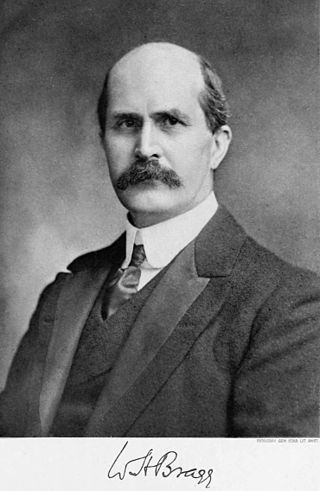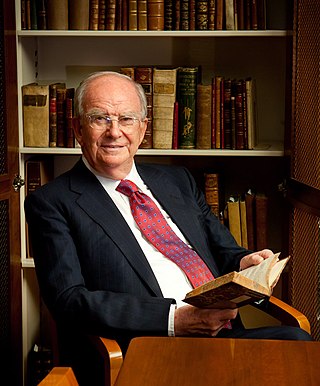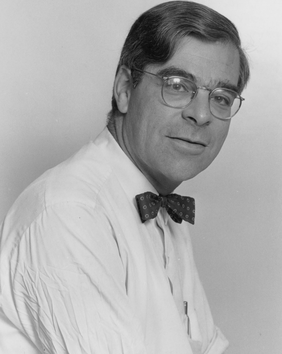
Sir Humphry Davy, 1st Baronet, was a British chemist and inventor who invented the Davy lamp and a very early form of arc lamp. He is also remembered for isolating, by using electricity, several elements for the first time: potassium and sodium in 1807 and calcium, strontium, barium, magnesium and boron the following year, as well as for discovering the elemental nature of chlorine and iodine. Davy also studied the forces involved in these separations, inventing the new field of electrochemistry. Davy is also credited to have been the first to discover clathrate hydrates in his lab.

Michael Faraday was an English scientist who contributed to the study of electromagnetism and electrochemistry. His main discoveries include the principles underlying electromagnetic induction, diamagnetism and electrolysis. Although Faraday received little formal education, he was one of the most influential scientists in history. It was by his research on the magnetic field around a conductor carrying a direct current that Faraday established the concept of the electromagnetic field in physics. Faraday also established that magnetism could affect rays of light and that there was an underlying relationship between the two phenomena. He similarly discovered the principles of electromagnetic induction, diamagnetism, and the laws of electrolysis. His inventions of electromagnetic rotary devices formed the foundation of electric motor technology, and it was largely due to his efforts that electricity became practical for use in technology.

Sir James Dewar was a British chemist and physicist. He is best known for his invention of the vacuum flask, which he used in conjunction with research into the liquefaction of gases. He also studied atomic and molecular spectroscopy, working in these fields for more than 25 years.

The Cavendish Laboratory is the Department of Physics at the University of Cambridge, and is part of the School of Physical Sciences. The laboratory was opened in 1874 on the New Museums Site as a laboratory for experimental physics and is named after the British chemist and physicist Henry Cavendish. The laboratory has had a huge influence on research in the disciplines of physics and biology.

Sir William Lawrence Bragg, was an Australian-born British physicist and X-ray crystallographer, discoverer (1912) of Bragg's law of X-ray diffraction, which is basic for the determination of crystal structure. He was joint recipient of the Nobel Prize in Physics in 1915, "For their services in the analysis of crystal structure by means of X-rays"; an important step in the development of X-ray crystallography.

The Royal Institution of Great Britain is an organisation for scientific education and research, based in the City of Westminster. It was founded in 1799 by the leading British scientists of the age, including Henry Cavendish and its first president, George Finch. Its foundational principles were diffusing the knowledge of, and facilitating the general introduction of useful mechanical inventions and improvements, as well as enhancing the application of science to the common purposes of life.

Sir William Henry Bragg was an English physicist, chemist, mathematician, and active sportsman who uniquely shared a Nobel Prize with his son Lawrence Bragg – the 1915 Nobel Prize in Physics: "for their services in the analysis of crystal structure by means of X-rays". The mineral Braggite is named after him and his son. He was knighted in 1920.
Experimental physics is the category of disciplines and sub-disciplines in the field of physics that are concerned with the observation of physical phenomena and experiments. Methods vary from discipline to discipline, from simple experiments and observations, such as Galileo's experiments, to more complicated ones, such as the Large Hadron Collider.

The Royal Institution Christmas Lectures are a series of lectures on a single topic each, which have been held at the Royal Institution in London each year since 1825, missing 1939–1942 because of the Second World War. The lectures present scientific subjects to a general audience, including young people, in an informative and entertaining manner. Michael Faraday initiated the Christmas Lecture series in 1825, at a time when organised education for young people was scarce. Faraday presented nineteen series of lectures in all.
The Bakerian Medal is one of the premier medals of the Royal Society that recognizes exceptional and outstanding science. It comes with a medal award and a prize lecture. The medalist is required to give a lecture on any topic related to physical sciences. It is awarded annually to individuals in the field of physical sciences, including computer science.

Sir John Meurig Thomas, also known as JMT, was a Welsh scientist, educator, university administrator, and historian of science primarily known for his work on heterogeneous catalysis, solid-state chemistry, and surface and materials science.
The Matteucci Medal is an Italian award for physicists, named after Carlo Matteucci from Forlì. It was established to award physicists for their fundamental contributions. Under an Italian Royal Decree dated July 10, 1870, the Italian Society of Sciences was authorized to receive a donation from Carlo Matteucci for the establishment of the Prize.

The Faraday Medal is a top international medal awarded by the UK Institution of Engineering and Technology (IET). It is part of the IET Achievement Medals collection of awards. The medal is named after the famous Michael Faraday FRS, the father of electromagnetism. Faraday is widely recognized as a top scientist, engineer, chemist, and inventor. His electromagnetic induction principles have been widely used in electric motors and generators today.
The Fullerian Chairs at the Royal Institution in London, England, were established by John 'Mad Jack' Fuller.

The Royal Institution of Australia (RiAus) is a national scientific not-for-profit organisation with a mission to "bring science to people and people to science". It opened in October 2009.
Sir Charles Richard Arthur Catlow is a British chemist and professor at University College London and Cardiff University. Previously, he was Director of the Davy-Faraday Research Laboratory (1998–2007), and Wolfson Professor of Natural Philosophy at the Royal Institution. Since 2016, he has served as the foreign secretary of the Royal Society., and since 2021 as President of the InterAcademy Partnership (IAP).
John Iball FRSE FIP (1907–1993) was a British physicist and crystallographer. He made major advances in cancer research. He gives his name to the Iball Index: the relative potency of carcinogenic compounds.
John Monteath Robertson FRS FRSE PCS CBE LLD (1900–1989) was a 20th-century Scottish chemist and crystallographer. He was the recipient of the Davy Medal in 1960 and president of the Chemical Society from 1962 to 1964.
William Albert Coates MBE was a science communicator, lecturer and technician who worked at the Royal Institution in London from 1948 to 1986 and was a popular figure on television shows. As a lecture assistant he designed experiments for, and appeared alongside Lawrence Bragg numerous times as part of the televised Royal Institution Christmas Lectures. He was awarded the Lawrence Bragg Medal in 1975.

Ulrich Wolfgang Arndt FRS was a scientist committed to the development of X-ray crystallography technology and instrumentation. His instruments were used to achieve data for some of the first solved protein structures, myoglobin and haemoglobin.